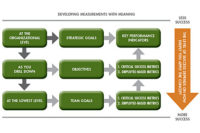Selecting Successful Six Sigma Projects

Management invests time and money in Six Sigma to get better results. Projects are the key to organization improvement in Six Sigma; they also are the most visible and quantifiable part of this effort. Too often, organizations do not do the basics of good project selection and project management well. Let’s look at the fundamentals of good project leadership with a few new ideas for those who already do the basics well.
In the early stages of Six Sigma Initiatives, the most visible activities are the training of Six Sigma experts-typically Green Belts and Black Belts-and the projects that these people lead. Recognizing the importance of their investment, organizations make their choices of candidates for this training carefully. Training is generally conducted professionally.
Project work plays a significant role in the implementation of Six Sigma and should have a big financial impact. Project success is critical to the return on investment in Six Sigma. How can efforts best be focused so an organization gets the desired results?
Project selection and building organizational support through the Project Champion or Sponsor are two critical factors in achieving success with Six Sigma projects. Most organizations select projects by asking their Champions, or Project Sponsors, to nominate projects. This involves the Champions thereby building their support. Unfortunately, new Champions do not always understand what a good Six Sigma project looks like so they submit a list of all the good improvement ideas on their plate.
These projects typically fall into one of several categories:
- Do It Projects, such as replace all computers that are more than two years old with new models.
- Innovation Projects, such as develop a new product to serve a new market.
- Problem Solving Projects, such as determine the root cause of the case packer downtime.
The major difference between general improvement projects and a Six Sigma Project is the focus on improving a process by shifting the average result, reducing the variation or both.
In addition, Six Sigma emphasizes that each project contributes substantially to the bottom line of the organization by improving quality, reducing costs, increasing customer satisfaction or spurring top-line growth. Achieving process improvement with financial impact requires that projects be strategically selected by the company, owned by a Champion and led by a specially trained Project Leader. To maximize a project success rate, there are several critical success factors that help to create a structure for success.
Four Factors Critical to Success
1. Project Champion. Six Sigma Project Champions own the project. This person represents the interests of the company and has the accountability of ensuring the success of the project. The Champion’s specific activities include participation in project selection, kickoff of the project with the project leader-Green Belt or Black Belt-communicating regularly with the project leader and team and providing organizational support to the project team.A Six Sigma Project Champion is involved with the project and provides enthusiastic support for the project, but does not run the day-to-day meetings or activities. The Champion works to keep the focus on organizational strategic goals and objectives, never letting the team get distracted or discouraged.
2. Project Leader. Six Sigma Project Leaders, usually a Black Belt or Green Belt, run the project. Good Six Sigma Belt training equips the selected persons with the Six Sigma methodology and the associated tools and skills to lead and run a Six Sigma project. This methodology known by its steps-Define, Measure, Analyze, Improve, Control or DMAIC-when used appropriately and led with consistency, guides the project team through the steps to improve the process associated with the specific project.
Persons selected to be trained as Green Belts or Black Belts must have the ability to learn the methodology, tools and skills. In the training they learn the process view focused on achieving the organizational goals and objectives by improving the process. They have the support of management to spend time in training and work on the project and have the strength of leadership to keep the team focused and on task.
3. Project Selection. Picking the right projects is a key responsibility of organizational leadership. Resources are limited, so set priorities on Six Sigma projects specifically for process improvement so each project supports the following criteria:
These criteria ensure that the Six Sigma project addresses a strategic process that improves the company’s quality and profitability as well as the satisfaction of its customers.
4. Project Charter. Every project that an organization empowers should have a project charter. For Six Sigma projects where the team functions for months and needs clear direction, the project charter is critical. This document must contain all of the essential information to focus and guide the project team activities through the DMAIC methodology.
The project charter is a summary document, ideally one page in length containing the following information,
These are the keys to an organization’s success. Select and train good Champions and Project Leaders. Select the right projects, prioritize them and clearly charter them. If in the Six Sigma journey the expected results are not being achieved, the answer may lay within these four critical success factors.
Organizations invest in Six Sigma to achieve a return for themselves and improvement for their customers. Successful Six Sigma projects have a high impact and payback to the organization. They are the result of careful selection, planning and execution by the organization, management by the Champion, leadership by the Belts and hard work by the project team following the direction summarized in the project charter. They do not happen by chance. Follow the process-achieve the results. Q
Quality Online
Visit www.qualitymag.com to read more articles on Six Sigma including:- “Quality Evolves in a Six Sigma World”
- “Six Sigma for Leaders”
- “Six Sigma’s Seven Deadly Sins”
Tech Tips
Looking for a reprint of this article?
From high-res PDFs to custom plaques, order your copy today!







